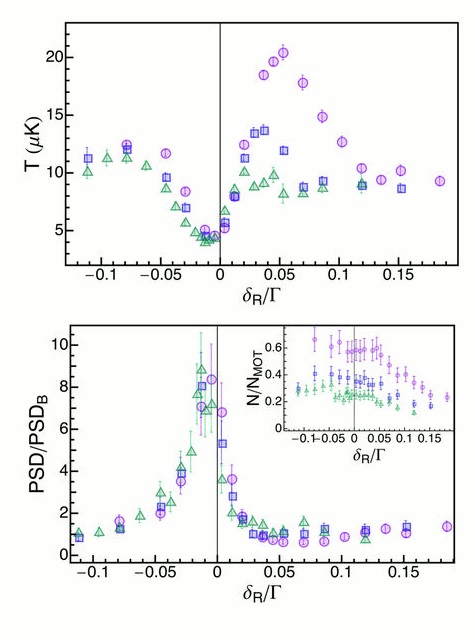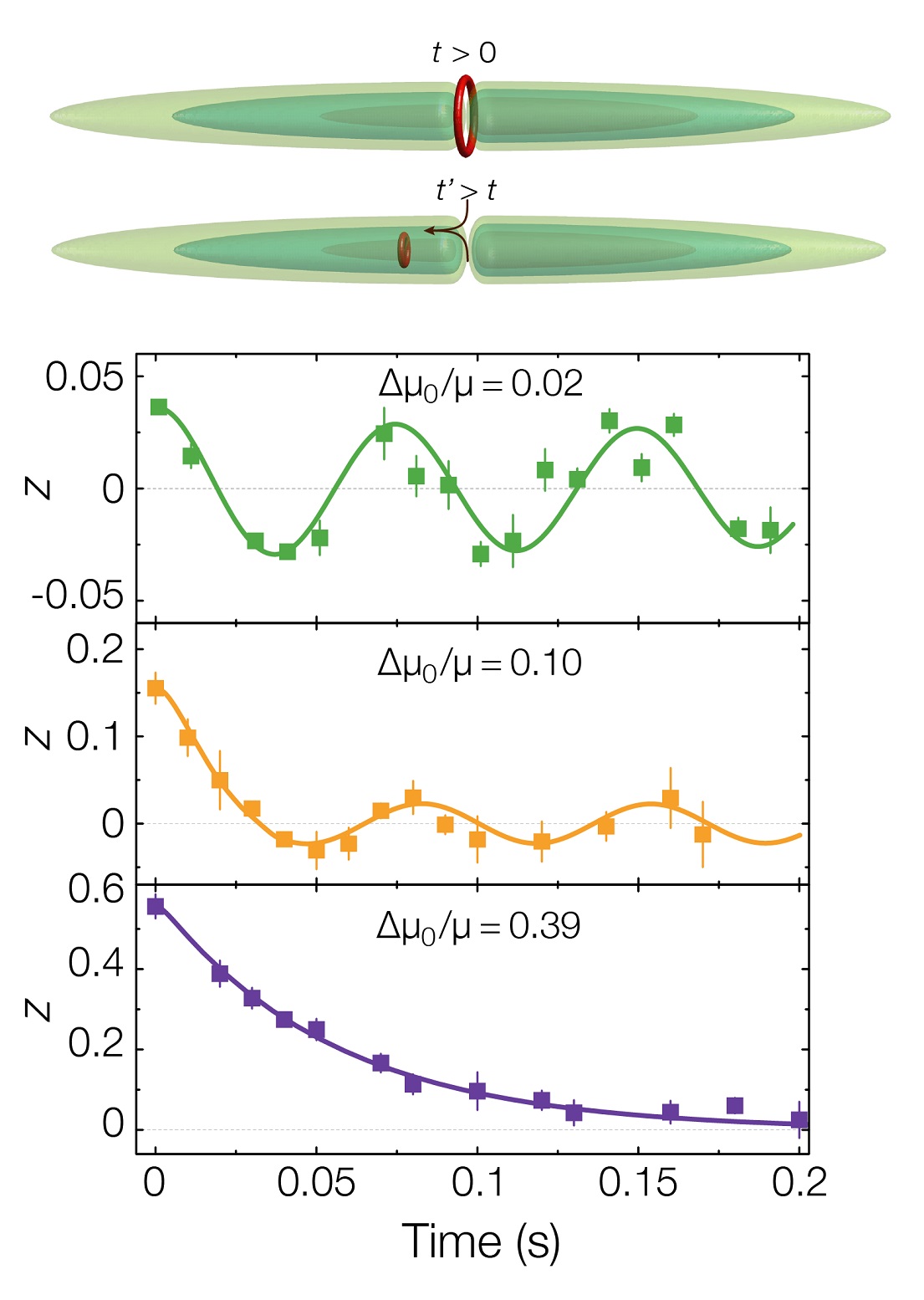 |
We have finalized the construction of the experimental setup, and we're now able to produce the first Lithium-Chromium MOT worldwide! Fun has just begun! |
LAST NEWS
 |
Laser cooling based on dark states, i.e. states decoupled from light, has proven to be effective to increase the phasespace density of cold trapped atoms. Dark-states cooling requires open atomic transitions, in contrast to the ordinary laser cooling used for example in magneto-optical traps (MOTs), which operate on closed atomic transitions. For alkali atoms, dark-states cooling is therefore commonly operated on the D1 transition nS1/2 → nP1/2. We show that, for 87Rb, thanks to the large hyperfine structure separations the use of this transition is not strictly necessary and that “quasi-dark state” cooling is efficient also on the D2 line, 5S1/2 → 5P1/2. We report temperatures as low as (4.0 ± 0.3) μK and an increase of almost an order of magnitude in the phase space density with respect to ordinary laser sub-Doppler cooling. S. Rosi, et al. |
 |
We study the emergence of dissipation in an atomic Josephson junction between weakly coupled superfluid Fermi gases. We find that vortex-induced phase slippage is the dominant microscopic source of dissipation across the BEC–BCS crossover. We explore different dynamical regimes by tuning the bias chemical potential between the two superfluid reservoirs. For small excitations, we observe dissipation and phase coherence to coexist, with a resistive current followed by well-defined Josephson oscillations. We link the junction transport properties to the phase-slippage mechanism, finding that vortex nucleation is primarily responsible for the observed trends of the conductance and critical current. For large excitations, we observe the irreversible loss of coherence between the two superfluids, and transport cannot be described only within an uncorrelated phase-slip picture. Our findings open new directions for investigating the interplay between dissipative and superfluid transport in strongly correlated Fermi systems, and general concepts in out-of-equilibrium quantum systems. A. Burchianti, et al., |
 |
We observed the transition to BEC for 162Dy atoms! |
 |
We achieved a 87Rb condensate of 4⨯105 atoms in the F=2, mF=2 state. We use a hybrid trap consisting of a single focused laser beam at 1064nm (dimple) in the horizontal direction and a quadrupole magnetic field. The dimple is vertically shifted with respect to the quadrupole center to avoid Majorana spin-flips. A first evaporation ramp with a microwave driving the (2,2) to (1,1) transition, is followed by an optical evaporation. |
